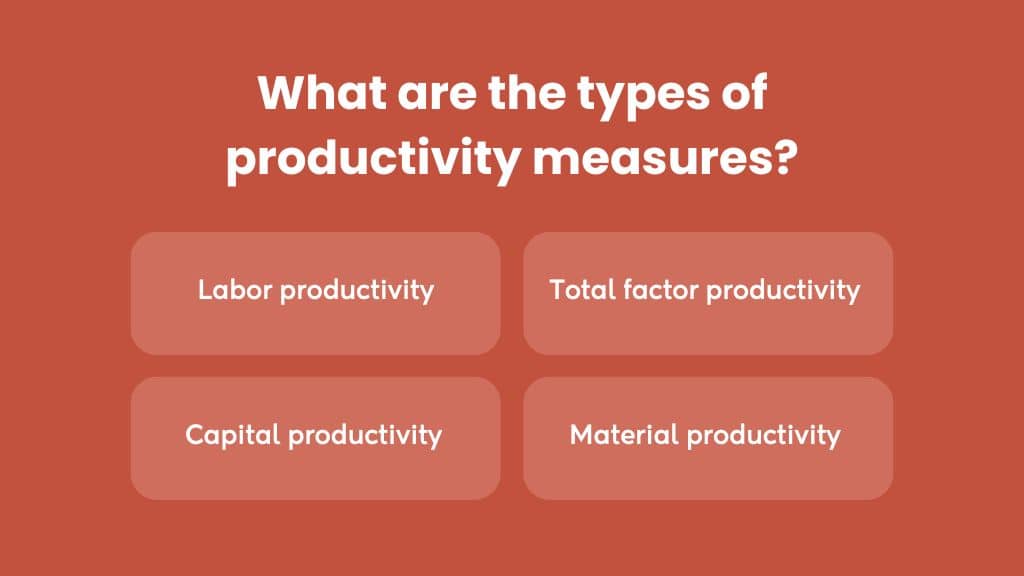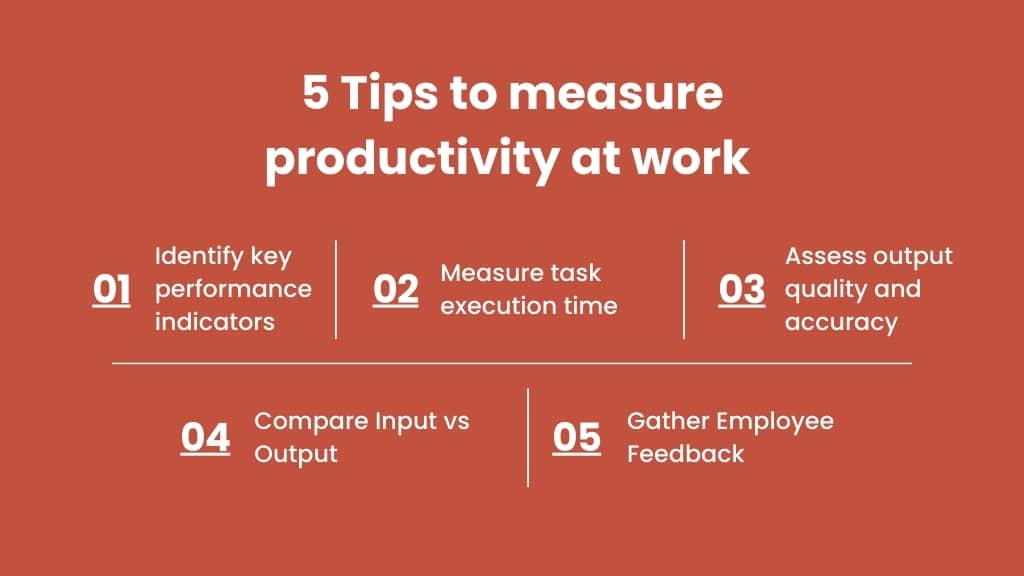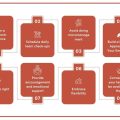Introduction
Companies often struggle when it comes to evaluating their business efficiency and effectiveness. While there are several reasons to blame, not knowing how to measure productivity at work remains a significant one.
Productivity is the fuel that drives an organization and defines its success. It reveals where there is room for improvement, highlights potential disruptions messing with your workflow, and identifies performance roadblocks holding off progress.
Here, I have listed 5 practical tips to keep track of your workplace productivity and shared insights on its significance for businesses.
What is productivity?
Productivity is a parameter that measures how proficient a person, team, department, or company is in delivering products or services. It is a proportion of the average output generated over a while to the resource input, also called the productivity formula.
Productivity measurement = Total output/Total Input
Input = Resource input such as hours, efforts, or materials used
Output = Delivered product or service, which can be evaluated in terms of quantity, timeliness, or value
Why is it important to measure workplace productivity?
There are several reasons why a company must make it a habit to measure their workplace productivity:

- Goal setting: It helps you set or refine your goals based on actual performance.
- Informed decisions: Assists managers in making data-driven and strategic decisions.
- Identify inefficiencies: Identify inefficiencies and bottlenecks hindering employee performance.
- Competitive edge: Shows how your organization stands against the competition.
- Performance evaluation: Allows leaders or managers to assess individual and team performance to enhance employee abilities and improve team performance.
- Resource allocation: Ensures optimal resource allocation for quick goal achievement.
- Operational improvement: Improves overall operations by reducing bottlenecks and delays and identifying areas for improvement.
- Opportunity discovery: Reveals areas where efforts can be maximized for better results
Also read: The Ultimate Playbook for Building High-Performing Teams in 2023
What are the types of productivity measures?
Understanding various types of productivity metrics can help you evaluate and understand several aspects of performance as defined below:

1. Labor productivity
Labor productivity is also known as workforce productivity. It is defined as the ratio of output produced per labor hour or worker. Technological advancements, individual workers’ abilities, and managerial skills are some factors that influence this type of productivity.
2. Total factor productivity
An organization’s operational efficiency is gauged by its total factor productivity (TFP). It defines an organization’s increased output which is not a result of any increase in capital or labor inputs. It reflects improvements in the workforce’s knowledge, expertise, and technology.
3. Capital productivity
Capital productivity defines how an organization utilizes its physical capital, like, equipment, supplies, workforce materials, and transportation to generate output. It subtracts the cost of capital investments from the organization’s total capital. The higher the productivity, the more effective the utilization of resources.
4. Material productivity
Material productivity measures output produced per unit of the materials used. The consumption of materials or resources varies from industry to industry. For example, it might involve tools and software licenses for a tech company or raw materials like chemicals, plastic, and steel for manufacturers.
5 Effective tips to measure productivity at work
While there are different methods to gauge productivity levels at work, here are a few strategies that worked well for our team.

1. Identify key performance indicators
Organizations often set goals and build strategic plans by defining key performance indicators to measure their performance. KPIs help you assess your organization’s productivity through quantifiable metrics.
Make sure these metrics are measurable and achievable. Also, you must communicate these to every employee so that they know what is expected of them. This alignment helps everyone stay aligned with organizational goals.
Also Read: Organizational culture: A complete kit for cultivating greatness in 2024
2. Measure task execution time
Tracking the time employees take to complete a task is essential to determine work productivity standards. It helps identify bottlenecks and optimize performance.
Estimating the time required and setting realistic deadlines helps you enhance productivity. Remember, the focus should be on delivering accurate results within the time frame, and not on the speed. Time tracking tools with built-in trackers and manual time estimates can help provide a true overview of average task execution time.
3. Assess output quality and accuracy
Evaluating the quality and accuracy of output is essential for assessing your organization’s productive health. You can achieve this by:
- Setting established benchmarks and quality standards.
- Evaluating customer satisfaction through feedback or surveys.
- Determining errors produced per unit of output.
- Assessing defects encountered in each unit produced.
- Monitoring the rework rate for corrections or reprocessing.
- Gathering employee perception on quality measures and workflow challenges.
- Educating your workforce on what quality and accuracy standards look like to you.
4. Compare input vs output
You can evaluate your employees’ efficiency by comparing the total labor or labor hours invested with the units of output generated. This analysis helps understand the cost-benefit ratio.
A higher ratio indicates more output produced in fewer hours, indicating a highly productive organization. On the other hand, a lower ratio suggests potential issues with either task completion times or output quality.
5. Gather employee feedback
An organization’s productivity is a measure of how well each employee performs in a team setting. To ensure high productivity, it’s essential to gather employee feedback to uncover potential productivity barriers.
Conduct one-on-one or group meetings to collect broad feedback on the challenges employees face. The practice highlights the potential opportunities that not only align employees with organizational objectives but boost their morale too.
Also Read: The Impact of Employee Feedback on Creating a Positive Workplace Culture
Conclusion
Understanding and measuring productivity at work is essential for achieving efficiency standards. From identifying key performance indicators to assessing output quality, and gathering feedback, each step plays a crucial role in driving optimal performance and continuous improvement.
The practice provides valuable information, enabling you to make operational changes and maximize the productive potential of your team. By acting on these insights, you can effectively guide your organization toward continuous improvement.
For more such useful information, keep reading-




















No Comments